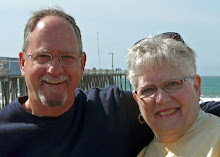Our next stop was Colonial Williamsburg. From 1699 to 1780, Williamsburg was the political, social and cultural capital of Great Britain’s largest, wealthiest and most populous colony. Entering Williamsburg is like stepping back in time. The end of the colonial era and the events leading to the Revolutionary War are recreated. It is the country’s largest and most popular living history museum.



Actors portray statesmen, and two dozen 18th century trades are demonstrated such as blacksmiths, silversmiths, carpenters, wheelwrights, coopers, wigmakers etc. At the courthouse you can witness recreation of court cases from the 1700’s. This was the capital of Virginia from 1699 to 1780. Washington and Jefferson spent time here debating the merits of forming an independent country.
In 1926 John D. Rockefeller Jr. initiated a $68 million restoration in which 88 original buildings and 500 other structures were restored or rebuilt. You can have a drink and dine at any of the historic taverns that serve colonial dishes in period settings.

We toured the Governor’s Palace where we saw walls lined with rifles and swords. There were people dressed in the clothing of the 18th century telling about the history of the building. This building has housed five governors, three from England, Patrick Henry and Thomas Jefferson. The grounds were very pretty, with many little and very tall hedges.


We then toured the Capital (House of Burgesses)


Outside the Raleigh Tavern we heard George Washington announce that he wasn’t going to run for a third term as President. He then gave a wonderful speech summing up his experiences in Williamsburg, the importance of following the Bill of Rights, and expressing his hopes for the future of the young republic. Before his speech we spoke with Martha Washington, who preferred to be called Mrs. Washington rather than Martha, until she knew us better.

Here are some more pictures to give you the feel of Historic Williamsburg.




 This is truly a wonderful place to visit and learn about the trials and tribulations that our founding fathers faced in their decision to break away from England.
This is truly a wonderful place to visit and learn about the trials and tribulations that our founding fathers faced in their decision to break away from England. 









































